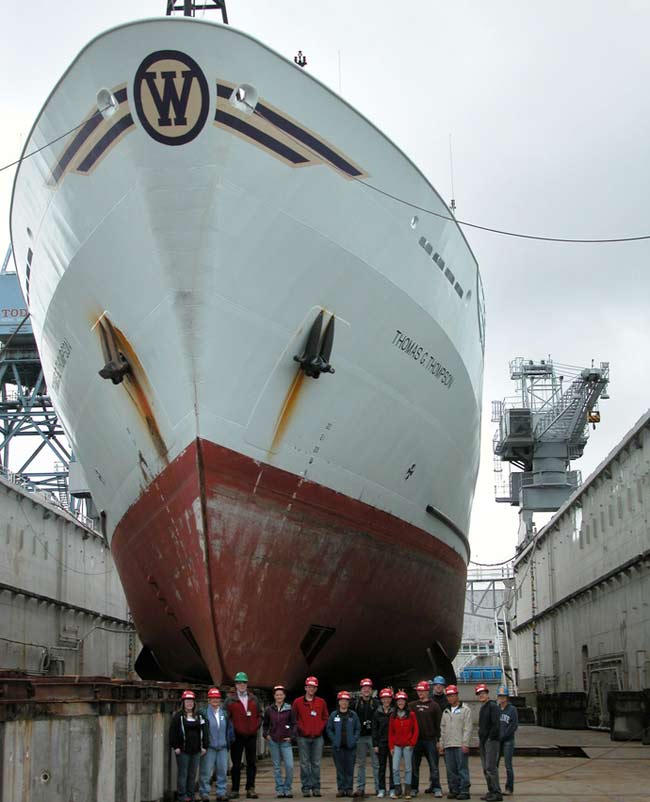Deep Ocean Research Just a Click Away

With the click of a mouse, anyone can follow oceanographers as they journey hundreds of miles off the Washington and Oregon coasts and dive — with robots — nearly a mile under the ocean's surface to explore some of the most extreme environments on Earth.
The expedition, called Enlighten '10, will explore and map methane ice deposits, an underwater volcano and seafloor hot springs. [See images from Enlighten '10]
Those following from home can track the ship's location on Google Earth, watch live webcasts from the deep-diving underwater robots and read daily blog posts from the scientists at sea.
Researchers at the University of Washington aboard the Navy vessel Thomas G. Thompson are leading the expedition (A giant purple and gold "W" is branded on the ship's bow to note the school's involvement). The R/V Thompson is 274 feet (84 meters) long and has 22 crew members and officers and 36 scientists.
When possible the researchers are streaming live video from underwater robots that are working on the seafloor. The expedition recently broadcast an online video of robots drilling into the base of El Guapo, a hydrothermal vent at Axial Volcano, roughly 300 miles (480 kilometers) off the coast of Oregon. The underwater volcano's summit is 4,626-feet- (1,410-meters-) deep — nearly a mile under the ocean's surface.
In the walls of these active sulfide chimneys — also known as black smoker chimneys — acidic, oxygen-free fluids flow in excess of 570 degrees Fahrenheit (300 degrees Celsius) and at pressures 200 times those on the surface (For one dive, the scientists put life-sized Styrofoam heads inside one robot. The extreme pressure at the seafloor shrunk the heads — and made souvenirs for the research team).
The robots are drilling into this chimney so they can insert three monitoring instruments. Scientists know that El Guapo is teeming with marine life on the outside, but the monitors will reveal what lives inside, which is a mystery to researchers.
Sign up for the Live Science daily newsletter now
Get the world’s most fascinating discoveries delivered straight to your inbox.
These high-tech monitors are part of a $126-million effort to wire the ocean with sensors that will record the hustle-and-bustle of the seafloor in this region.
"By 2014, the [500-mile] 800-kilometer network of fiber-optic and electrical cables and instruments will allow scientists, educators, students and the public to observe and interact with the oceans via the internet in entirely new ways, 24/7, for decades," said chief scientist on the cruise John Delaney of the University of Washington in Seattle.
By 2020, Delaney said he expects several spots across the globe to be wired as well.
The expedition runs until Aug. 23. Updates and live video are online at the Enlighten '10 mission Web site.
- Infographic: Tallest Mountain to Deepest Ocean Trench
- In Images: Polarstern Cruises The Polar Waters
- Gallery: Shipwreck Alley's Sunken Treasures
This article was provided by OurAmazingPlanet, a sister site to LiveScience.










